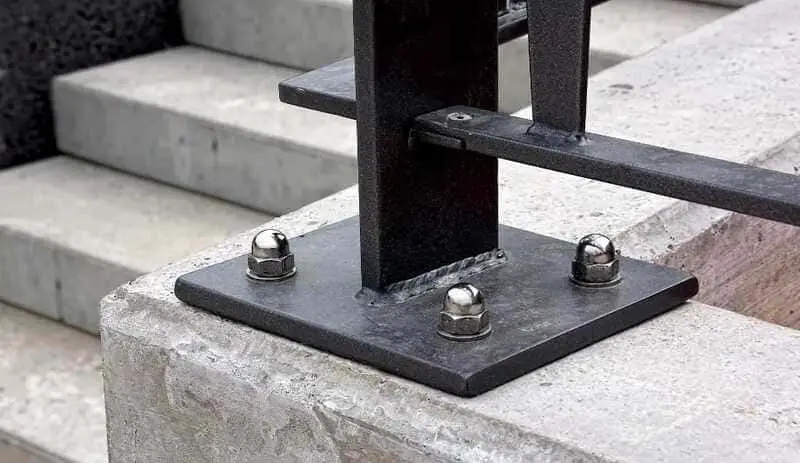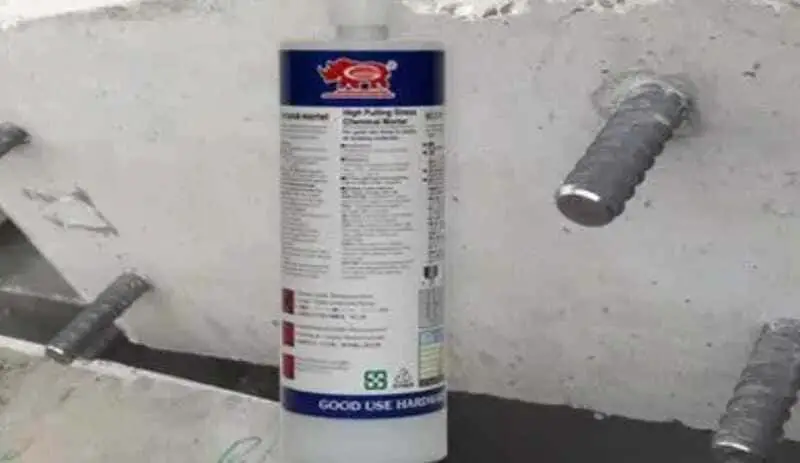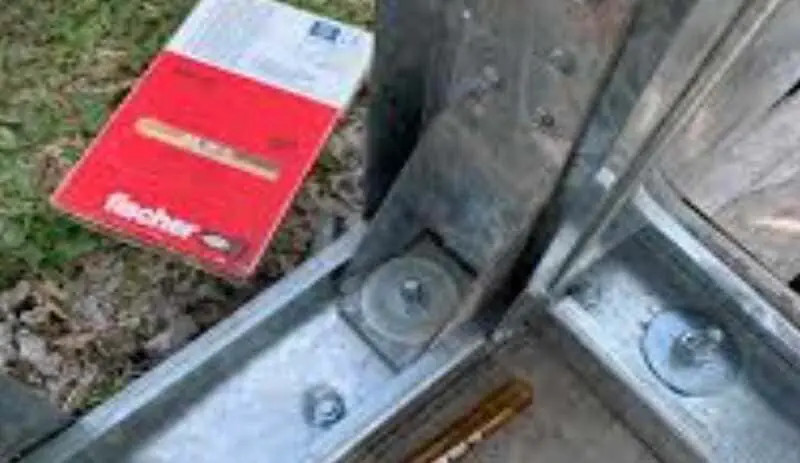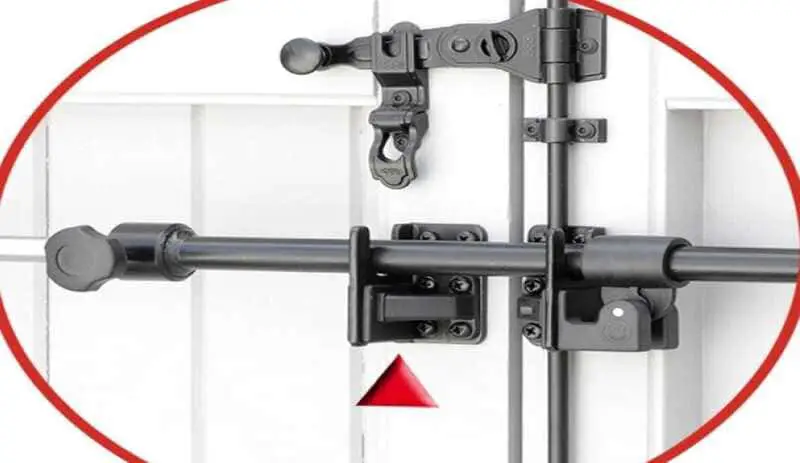Chemical anchors are a fastening solution that has become increasingly popular in construction and in the home. These devices use a combination of resins and hardeners to create a strong, durable bond between the anchor and the substrate.
Because of their strength and durability, chemical anchors are ideal for DIY and home improvement projects that require a secure, permanent attachment.

In this article, we will explore the applications of chemical anchors in the home, from building shelving and furniture to installing electronic devices and ventilation systems. In addition, we will provide recommendations and precautions for installing chemical anchors in the home to ensure a secure and durable fastening.
If you are looking for a reliable and durable fastening solution for your DIY projects, chemical anchors may be the answer you’ve been looking for.
What are chemical anchors and how they work.
Chemical anchors are a fastening technique used in construction and the home to secure objects to solid surfaces. These devices consist of a fastener, such as a screw, bolt or rod, which is inserted into a hole drilled into the substrate. The hole is then filled with an epoxy or acrylic resin and a hardener that are mixed inside the hole, creating a strong chemical bond between the anchor and the substrate.
Chemical anchors work by creating a mechanical and chemical bond between the fastener and the substrate. The resin and hardener mix within the drilled hole, creating a chemical reaction that bonds the anchor to the substrate. This chemical bond is highly resistant to vibration, impact and load, making chemical anchors an ideal fastening solution for home applications that require a permanent and secure attachment.
Applications for chemical anchors in the home are numerous and varied. From installing shelving and furniture to securing electronic devices and safety features, chemical anchors provide a strong and durable fastening solution for all types of do-it-yourself projects in the home. It is important to note that the installation of chemical anchors requires specific precautions and recommendations to ensure a safe and durable fastening.
Types of chemical anchors and their characteristics.
There are several types of chemical anchors that can be used in the home, each with its own characteristics and benefits. One of the most common types are epoxy resin anchors, which are ideal for heavy-duty applications due to their high bond strength and ability to withstand heavy loads.
Another type of chemical anchor is acrylic resin anchors, which offer greater flexibility and resistance to vibration and impact, making them ideal for projects that require a degree of cushioning. In addition, acrylic resin chemical anchors are resistant to corrosion and chemical agents, making them ideal for use in corrosive environments or in contact with chemicals.
Finally, polyester chemical anchors are a more economical and versatile option for lightweight fastening applications. These anchors are quick to install and offer good load and impact resistance, although they are not suitable for heavy-duty applications.
In terms of applications for chemical anchors in the home, epoxy resin anchors are ideal for fastening shelving, furniture and security features, while acrylic resin anchors are ideal for fastening ventilation and air conditioning systems. Polyester anchors are a good option for fixing light objects such as pictures, mirrors and small shelves. It is important to keep in mind that each type of chemical anchor has its own installation recommendations and precautions, so it is important to follow the manufacturer’s instructions to ensure a safe and durable fastening.
Common uses of chemical anchors in the home.
Another important topic within the applications of chemical anchors in the home is the various uses they can have due to their fastening characteristics. Chemical anchors are a popular fastening solution in the home due to their strength and durability. There are many common applications of chemical anchors in the home, including the fastening of shelving, cabinets, ventilation and air conditioning systems, and security features such as grab bars and anti-theft devices.
Chemical anchors are especially useful for do-it-yourself home projects that require permanent, secure fastening. For example, if you are installing a storage system in the garage or cellar, chemical anchors can secure heavy shelves and storage boxes easily and securely. They are also useful for securing large mirrors and pictures, which can help prevent them from falling and being damaged.

Another common use for chemical anchors in the home is in attaching security devices, such as locks and grab bars. Chemical anchors are ideal for this application, as they provide a secure fastening that can withstand the weight and pressure placed on these devices.
Installation of chemical anchors: precautions and recommendations.
Installing chemical anchors can be a simple task, but it requires caution and following the manufacturer’s recommendations to ensure the safety and durability of the fastening. To begin with, it is important to select the proper type of chemical anchor for the application to be fastened. Each type of chemical anchor has its own installation recommendations and precautions, so it is essential to follow the manufacturer’s instructions.
Prior to installation, it is important to make sure that the fastening surface is clean and free of dust, oils or any other type of residue that may affect the adhesion of the chemical anchor. In addition, it is important to carefully measure and mark the location where the anchor will be installed to avoid location errors and to ensure accurate fastening.
During installation, it is important to follow the manufacturer’s recommendations regarding the amount of chemical anchor to be used, the depth and setting time required for attachment. It is important not to overload the chemical anchor, as this may compromise its holding power and weaken the structure.
It is important to note that applications of chemical anchors in the home require careful adherence to the manufacturer’s instructions and the performance of the task by persons trained in their installation. If in doubt, it is advisable to consult a professional to ensure the safety and success of the fastening.
How to choose the right chemical anchor for each home project.
When selecting the right chemical anchor for each home project, it is important to consider several factors. The type of fastening surface, the load to be applied to the anchor and the environment where the fastening will take place are just a few of the aspects to consider.
First of all, it is important to select the type of chemical anchor that best suits the fastening surface. For concrete surfaces, the use of epoxy or polyester chemical anchors is recommended. For masonry surfaces, the use of polyester resin or acrylate chemical anchors is recommended. And for metal surfaces, the use of methacrylate resin or epoxy chemical anchors is recommended.

Another important factor to consider is the load to be applied to the anchor. It is necessary to ensure that the chemical anchor chosen has sufficient capacity to withstand the load that will be applied to it. Manufacturers often provide information on the load bearing capacity of their products, so it is important to review this information before fastening.
In addition, it is important to consider the environment where the fastening will be performed. For humid environments or environments exposed to the elements, the use of epoxy chemical anchors is recommended, since they are more resistant to humidity and temperature changes. For corrosive environments, the use of stainless steel or methacrylate resin chemical anchors is recommended.
Chemical anchors in shelving and furniture construction.
Chemical anchors are an ideal solution for the construction of shelving and furniture in the home, as they provide secure and strong fastening on a variety of surfaces. In shelving construction, chemical anchors are used to attach support bars to walls and shelves to bars. In furniture construction, chemical anchors are used to attach legs or rails to wood, metal or concrete surfaces.
The advantage of chemical anchors in shelving and furniture construction is that they provide a more secure and stronger fastening than traditional fastening methods, such as screws or nails. Chemical anchors adhere to the fastening surface through a chemical reaction, ensuring a strong and durable bond. In addition, chemical anchors adapt to a variety of surfaces, which means they can be used in a wide range of construction projects.
When constructing shelving and furniture, it is important to choose the right chemical anchor for the fastening surface and the load that will be applied to the fixture. Chemical anchors are available in a variety of materials, such as epoxy, polyester resin and methacrylate, and each has its own characteristics and load capacities.
Chemical anchors in the installation of blinds and shades.
Chemical anchors are an excellent choice for the installation of blinds and shades in the home. Often, windows and walls are not designed to support the weight of blinds and shades, which can cause them to sag over time. This is where chemical anchors can provide a secure and durable attachment.
Chemical anchors are used to attach blind and drapery brackets to the wall, and are bonded through a chemical reaction that provides a strong, resilient bond. The installation process is simple, and involves drilling a hole in the wall of the proper size for the anchor, inserting the anchor into the hole, and then screwing the bracket into the anchor.
Chemical anchors are an excellent choice for installing blinds and shades in concrete or masonry walls, as they provide a secure and strong hold even on difficult surfaces. They can also be used in plaster or drywall walls, although it is important to choose the right chemical anchor for this type of surface.
When choosing the right chemical anchor for the installation of blinds and curtains, it is important to consider the weight of the blind or curtain, as well as the size and location of the bracket. Chemical anchors are available in a variety of sizes and load capacities, so it is important to select the right one to ensure a secure and durable attachment.
Chemical anchors in fixing brackets for TVs and other electronic devices.
Chemical anchors are an excellent choice for attaching TV mounts and other electronic devices to walls in the home. Walls are not always designed to withstand the weight and forces generated when installing these devices, which can cause them to fall and damage the wall or the electronics. This is where chemical anchors can provide a safe and durable solution.
Chemical anchors work through a chemical reaction that creates a strong, resilient bond between the anchor and the wall. To install a chemical anchor for TV mounts and other electronic devices, it is necessary to drill a hole in the wall the appropriate size for the anchor, insert the anchor into the hole and allow it to cure for the time specified in the instructions. Once the anchor has cured, the bracket can be attached to the wall using the screws provided.
Chemical anchors are especially useful for concrete or masonry walls, where a stronger attachment is required. They can also be used in plaster or drywall walls, although it is important to choose the right chemical anchor for this type of surface.
When choosing the right chemical anchor for fixing brackets for TVs and other electronic devices, it is important to consider the weight of the device and the size of the bracket. Chemical anchors are available in a variety of sizes and load capacities, so it is important to select the right one to ensure a secure and durable attachment.
Chemical anchors in the installation of home security elements, such as burglar bars.
Chemical anchors are an excellent option for the installation of home security elements, such as burglar bars on windows and doors. These bars can be very effective in preventing break-ins and increasing home security, but only if they are installed correctly.
Chemical anchors work through a chemical reaction that creates a strong, resilient bond between the anchor and the wall. To install a burglar-resistant bar with chemical anchors, it is necessary to drill a hole in the wall of the proper size for the anchor, insert the anchor into the hole and allow it to cure for the time specified in the instructions. Once the anchor has cured, the anti-theft bar can be attached to the wall using the screws provided.

It is important to choose the right chemical anchor for the installation of burglar bars. It must be able to support the weight of the bar and withstand the forces generated in the event of a burglary attempt. In addition, it is important that the bar is correctly dimensioned and fixed to the wall, so that it is effective in its function of preventing burglary.
When installing burglar bars with chemical anchors, it is important to follow the manufacturer’s instructions and take safety precautions, such as wearing safety glasses and gloves. It is also important to make sure that the wall on which the burglar bar will be installed is strong enough to support the installation of the bar and anchors.
Chemical anchors in the installation of ventilation and air conditioning systems.
Chemical anchors are an excellent choice for the installation of ventilation and air conditioning systems in the home. These systems can provide adequate ventilation and a comfortable environment in the home, but only if they are installed correctly.
Chemical anchors work through a chemical reaction that creates a strong, resilient bond between the anchor and the wall. To install a ventilation or air conditioning system with chemical anchors, it is necessary to drill a hole in the wall the proper size for the anchor, insert the anchor into the hole and allow it to cure for the time specified in the instructions. Once the anchor has cured, the ventilation or air conditioning system bracket can be attached to the wall using the screws provided.
It is important to choose the right chemical anchor for the ventilation or air conditioning system installation. It must be able to support the weight of the system and resist the forces generated by the moving air. In addition, it is important that the system is correctly dimensioned and fixed to the wall, to ensure its stability and avoid damage to the wall.
When installing a ventilation or air conditioning system with chemical anchors, it is important to follow the manufacturer’s instructions and take safety precautions, such as wearing protective goggles and gloves. It is also important to make sure that the wall where the ventilation or air conditioning system will be installed is strong enough to support the weight of the system and the anchors.

